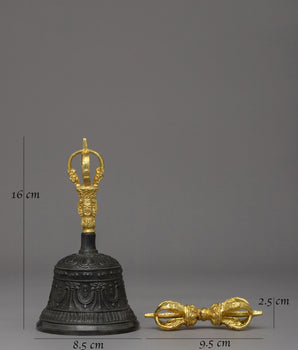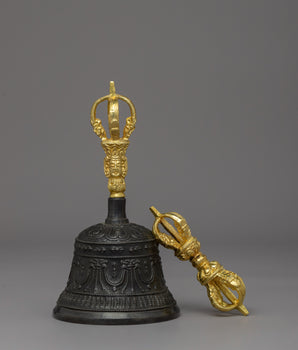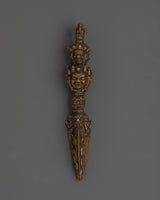

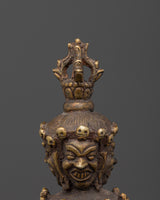
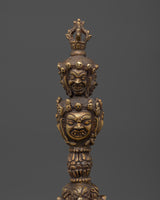
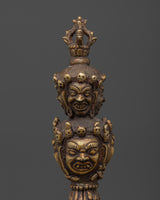
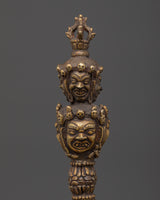
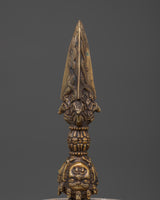
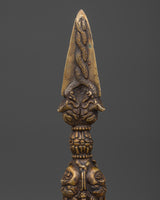
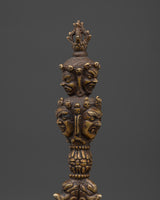
Buddhist Bronze Buddhist Phurba | Traditional Himalayan Ritual Tool

100% AUTHENTIC

HANDMADE

FREE SHIPPING
Tibetan Bronze Buddhist Phurba | For Tibetan Ceremonial Use
--------------------------------------------
Size: 19.5cm (Height) x 4cm (Width)
Weight: 0.42kg
Materials: Bronze Body
--------------------------------------------
About The Ritual Item :
With this Bronze Buddhist Phurba, a holy three-sided blade used in Vajrayana techniques to defeat barriers and negative energy, you can embrace the strength and symbolism of Tibetan ceremony. This potent spiritual weapon, which measures 19.5 cm in height and 4 cm in width, is expertly crafted by hand from bronze, lending it a sacred and authentic feel. A necessary tool for practitioners and collectors of Tibetan antiques, the Phurba, or ritual blade, is regarded in Buddhist traditions as a sword of wisdom that eliminates ignorance and spiritual obstacles.
This bronze Phurba dagger, weighing 0.42 kg, is a powerful yet controllable weapon that would look great on a personal altar, in a meditation area, or a designated spot for religious offerings. From the furious deity faces carved along its handle to the triple-sided blade symbolizing the cutting of delusion, every piece of the design is rich with symbolism. The bronze body provides a classic aesthetic and spiritual authenticity that are highly prized in ceremonial and contemplative contexts.
This Bronze Buddhist Phurba is perfect for energy cleaning, ceremonies, and as a spiritually significant piece of décor. This Tibetan bronze Phurba ties you to millennia of spiritual tradition and protection rituals, regardless of whether you practice Vajrayana or collect ritual implements.
Introduction To The Phurba :
The ceremonial dagger (Sanskrit: Kila; Tibetan: phurba) is essential for expelling evil and is considered particularly effective in neutralizing the forces obstructing Tantric Buddhist practice. It has ancient origins, first appearing in the Indian Rig Veda as the core blade of the vajra used by Indra to destroy the primordial cosmic snake Vritra. Kila, derived from Sanskrit, was most likely associated with Vedic sacrifices. Meditation on the Vajrakila Tantra, an early Indian scripture first promoted in Tibet in the eighth century by Padmasambhava, one of the founding teachers of Tibetan Buddhism, is used to invoke the three-headed Vajrakila Buddha.
How to Set Up Your Buddhist Shrine?
Find a clean, quiet, and uncluttered spot.
Please set up an altar table and cover it with an altar cloth that calls to you.
Place your sacred item (statue, thangka, or a picture of Buddha) at the center.


















